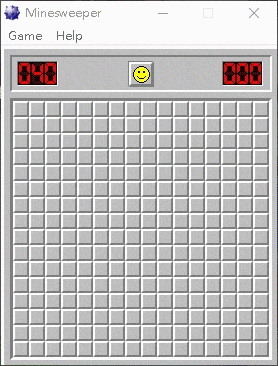I got addicted to Minesweeper the first few days when I started playing this awesome puzzle game. Solving the game faster every few times gives me great satisfaction of self-fulfillment. However, for the “expert” board setting, where 99 mines are hidden within a 16×30 square grid, I had never obtained a score lower than 100 seconds. Curious of what the fastest solving rate is the one can achieve, I designed a Minesweeper AI program that can automatically play the Windows Minesweeper game.
C language is used for programming, and the algorithm flowchart is displayed in Fig. 1.

Figure 1. Algorithm flowchart of the Minesweeper AI program.
Here breadth-first-search (BFS) is used to search for uncovered squares on the grid, and a queue is used for saving uncovered squares to be analyzed. A game-playing optimized algorithm is written inside the program, and OpenCV is used to take a snapshot of the Minesweeper window region and process the image for subsequent calculations. Mouse movement and click actions are realized by including the windows.h header.
The usage of the program is relatively simple. The user should only execute the Minesweeper game program, and modify the game setting beforehand. After opening the AI .exe file, the program will automatically locate the Minesweeper game, calculate the dimensions, then start playing. If a mine is accidentally clicked, the program will continue to play the next game until a fully uncovered board is achieved.
Here is a clip demonstrating the Minesweeper AI playing an expert level game and winning in 7 seconds. It failed on the first try almost at the end, but succeeded on the second try.
[Download program for the Minesweeper AI (Can only run on a windows 64-bit OS)]

















